Less money, more innovation! Regeneration of deprived residential areas since the crisis
Edited on
12 April 2016Since the crisis local municipalities are forced to change their approach to the regeneration of deprived residential areas. They have several options for cheaper interventions, as shown in this article.
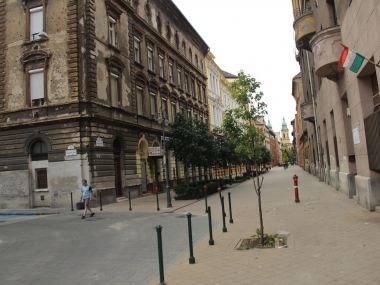
Deprived areas did not get much attention in European cities until the 1970s, by the time of which the post-war quantitative housing shortage has more or less been eliminated in most countries. Since then substantial progress has been achieved in the approach to the derelict inner city areas with their worn-out building stock. The 1970s were dominated by strong physical interventions, ‘brutal regeneration’. This has been replaced one decade later by the ‘smooth urban renewal’, giving equal importance to social aspects (aiming to keep the original population in the area). The 1990s brought even more complex approaches, aiming for the integration of economic, environmental and social aspects into a ‘complex urban renewal’ strategy. Finally, in the 2000s larger weight has also been given to the externalities of regeneration interventions with the aim to include these into long-term strategic planning considerations. The EU Cohesion Policy contributed a lot with the URBAN Community Initiative (existing until 2006) to the strengthening of the complexity and strategic view of regeneration policies.
The economic and financial crisis brought an abrupt end to this evolving urban regeneration agenda. Data from the 6th Cohesion Report highlight the effect of the crisis on government public investments showing e.g. that the public sector deficit in the EU-27 increased from 1.9% of GDP in 2008 to 6.9% of GDP in 2009. The crisis had also dramatic consequences on sub-national (i.e. regional and local) governments. Their share in public investment was around 2.3% of GDP by 2007, which declined sharply to 1.8% of GDP, much lower than the level of 1997. In real terms, subnational public investment in the EU fell by 7.2% in 2010, 5.9% in 2011, 3.3% in 2012 and 8.6% in 2013.
National urban policies, more specifically urban regeneration interventions were among the first victims of the frozen financial climate. In many countries, such as the UK, Netherlands, Denmark, Sweden national urban policies have been terminated or substantially downsized; this is especially true for the area-based urban regeneration schemes. Among the larger EU countries only France and Germany continue recently area-based urban regeneration policies.
In the absence of national support and facing also the sharp decrease of their own budgets, local municipalities are forced to change their approach to the regeneration of deprived residential areas. They have several options to do so. The easiest is, of course, to postpone further residential regeneration actions until the financial circumstances improve. There are, however, also other possibilities. The following list of options is not at all exhaustive and the interventions are not mutually exclusive, i.e. municipalities can opt for more than one option simultaneously.
- continue the renewal of residential buildings but decrease the level of renewal (choosing cheaper renovation alternatives instead of fancy and costly regeneration interventions)
- instead of the renewal of residential buildings turn towards cheaper interventions, e.g. improving the public spaces or public services in deprived areas
- initiate the temporary use of buildings in order to make people and businesses interested in the area
- change the regulations of renewal towards more flexibility: relax on required standars, ease building codes, allow for temporary solutions
- give/allow larger role to other public actors, to NGOs, to the private sector
- involve more the residents into the process of urban regeneration.
Today the chances for any type of interventions in deprived areas depend mainly on the local actors. The ’palette’ of initiatives became much more colourful, depending on the innovation will and skills of civil servants, residents, NGOs, semi-public and private actors. The following examples illustrate this multitude of potential methods.
1) Carry on renewal on reduced level
Since the crisis there are several examples on torsos in new construction, leaving for long time partly unfinished projects behind. To avoid similar problems in urban renewal, the original plans for regeneration have to be reconsidered, adjusting the aims to the financial realities. The case of the Palma Palmilla housing estate in Malaga (ES) is a good illustration.
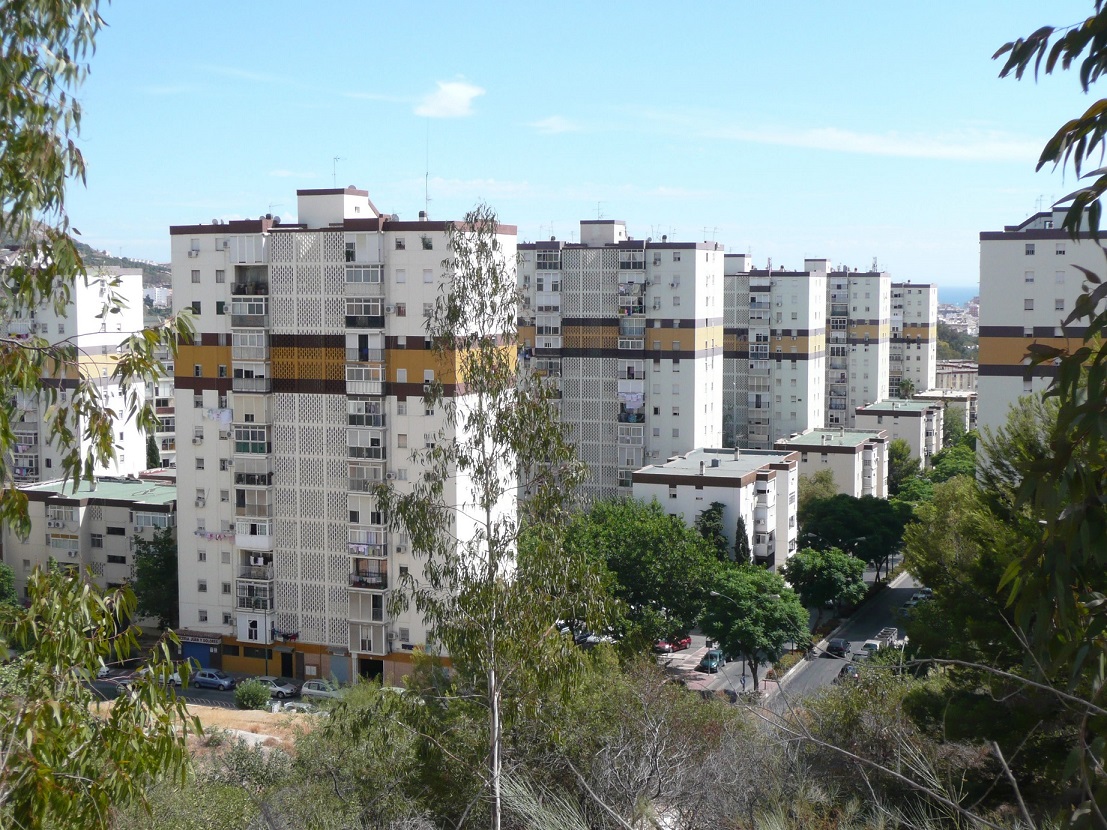
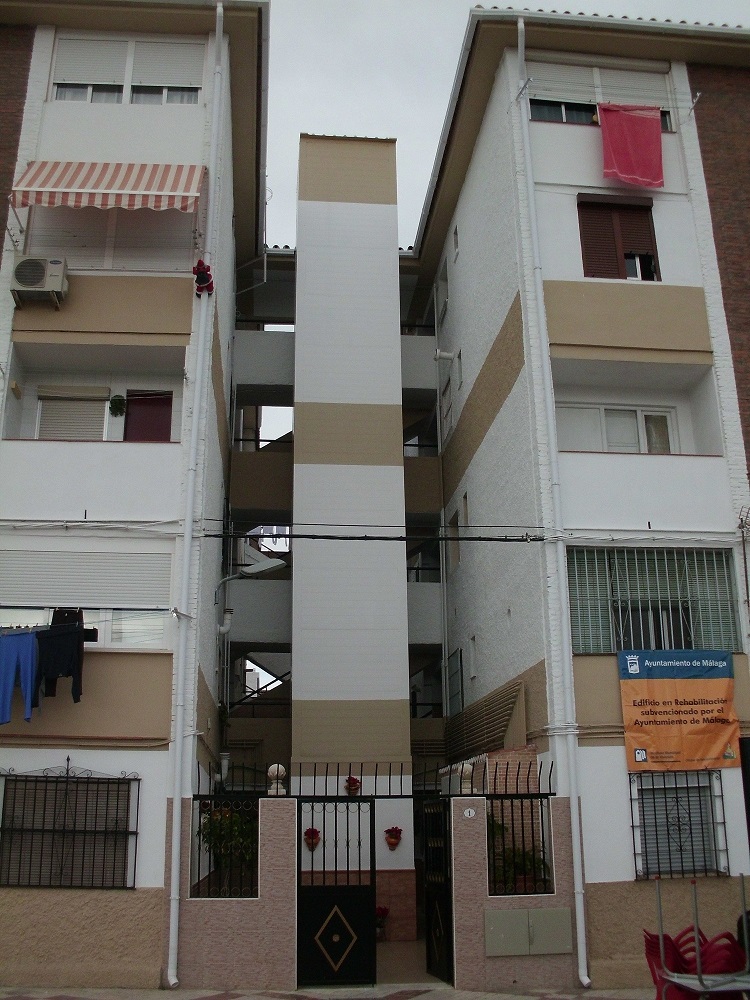 On the Palma-Palmilla housing estate (built in 1960-61, having a population around 30 thousand) the estimated poverty rate is close to 50% while unemployment might reach 75-80%. In the second part of the 2000s a comprehesive plan was developed for urban regeneration with €80 m total funding. The crisis brought disagreement on how the project should be managed and regeneration stalled. The vision how to implement urban regeneration had to be changed – instead of relying overly on EU-funds, politicians open up for more involvement of the people. Currently in the Re-Block target area there are 73 proposals how to involve the private companies and the citizens into smaller renewal schemes.
On the Palma-Palmilla housing estate (built in 1960-61, having a population around 30 thousand) the estimated poverty rate is close to 50% while unemployment might reach 75-80%. In the second part of the 2000s a comprehesive plan was developed for urban regeneration with €80 m total funding. The crisis brought disagreement on how the project should be managed and regeneration stalled. The vision how to implement urban regeneration had to be changed – instead of relying overly on EU-funds, politicians open up for more involvement of the people. Currently in the Re-Block target area there are 73 proposals how to involve the private companies and the citizens into smaller renewal schemes.
(Source: URBACT Re-Block network, Malaga LAP)
2) Turn towards cheaper interventions: renewal of public/common space instead of residential buildings
The renovation of whole residential buildings is very expensive, especially if these are in historic areas of cities where also the architectural heritage has to be taken care of. It is not unusual that in such areas renovation is continuously postponed ‘until better times’, leading to accelerated deterioration of the whole area. An alternative is to initiate cheaper interventions which can keep the hope that once the ‘better times’ will really arrive. Such a case is described below from Bratislava.

 In the historic part of Bratislava there are many joint inner courtyards which belong to the surrounding buildings. In such cases the interests of residents in different positions are conflicting with each other and also the collective management of these semi-public spaces is difficult to organize. Instead of full and costly renovation of the buildings it is cheaper to look for active members of the community, who will handle ongoing disparities in the preferences of residents, while simultaneously deal with the deterioration of the courtyard. The pictures show a 2000 sqm courtyard space, collectively owned by 500 residents who finally took over the management of the courtyard and created with the help of a local NGO a new green space. (Source: presentation of Michal Maco at the AESOP 2015 conference in Prague.)
In the historic part of Bratislava there are many joint inner courtyards which belong to the surrounding buildings. In such cases the interests of residents in different positions are conflicting with each other and also the collective management of these semi-public spaces is difficult to organize. Instead of full and costly renovation of the buildings it is cheaper to look for active members of the community, who will handle ongoing disparities in the preferences of residents, while simultaneously deal with the deterioration of the courtyard. The pictures show a 2000 sqm courtyard space, collectively owned by 500 residents who finally took over the management of the courtyard and created with the help of a local NGO a new green space. (Source: presentation of Michal Maco at the AESOP 2015 conference in Prague.)
3) Initiate temporary use of buildings and public spaces
In the lack of public funding and private financing for traditional urban regeneration, buildings and public spaces – which otherwise should undergo deep upgrading – can be used on temporary basis for other purposes in order to catch the interest of people and potential investors and creating incentives towards later regeneration. Bremen (DE) is particularly active in temporary use arrangements in deprived areas, organized by an arms length NGO.

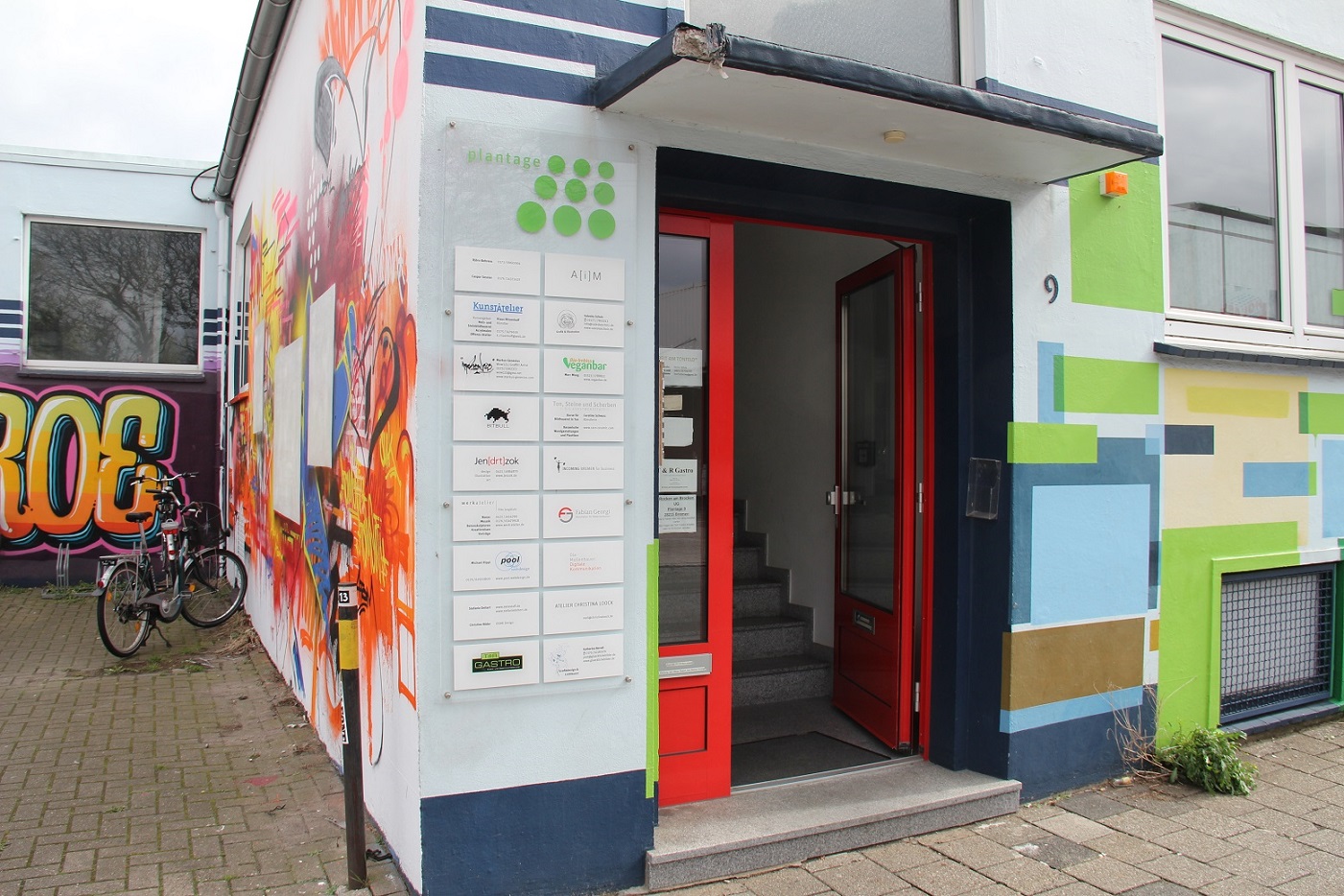 The core activity of ZZZ, the temporary use agency of Bremen is to arrange temporary use of empty, under-used buildings and public spaces. One example is Plantage, a building which was planned to be demolished, but has been acquired by ZZZ in 2010 for a symbolic rent. The building became an incubator for artists and start-up companies, who are paying a reduced rent (some 70% of the market level). The co-existence of different ventures and initiatives functions well. An association has been formed from the tenants and ZZZ handed over the key to the association to make decisions by themselves.
The core activity of ZZZ, the temporary use agency of Bremen is to arrange temporary use of empty, under-used buildings and public spaces. One example is Plantage, a building which was planned to be demolished, but has been acquired by ZZZ in 2010 for a symbolic rent. The building became an incubator for artists and start-up companies, who are paying a reduced rent (some 70% of the market level). The co-existence of different ventures and initiatives functions well. An association has been formed from the tenants and ZZZ handed over the key to the association to make decisions by themselves.
Another example is to be found in the very inner city of Bremen where some 20 years ago an inner courtyard was covered with glass to create a shopping centre. This was a mistake, it never functioned well (recently even a much bigger and newer shopping center stays partly empty on the main street). The first idea was to rebuild the courtyard but then it was handed over to three organizations, one of them ZZZ, who started to move in temporary users. ZZZ runs now 6 units (partly as shops, partly as ateliers of different uses) – the scheme functions well.

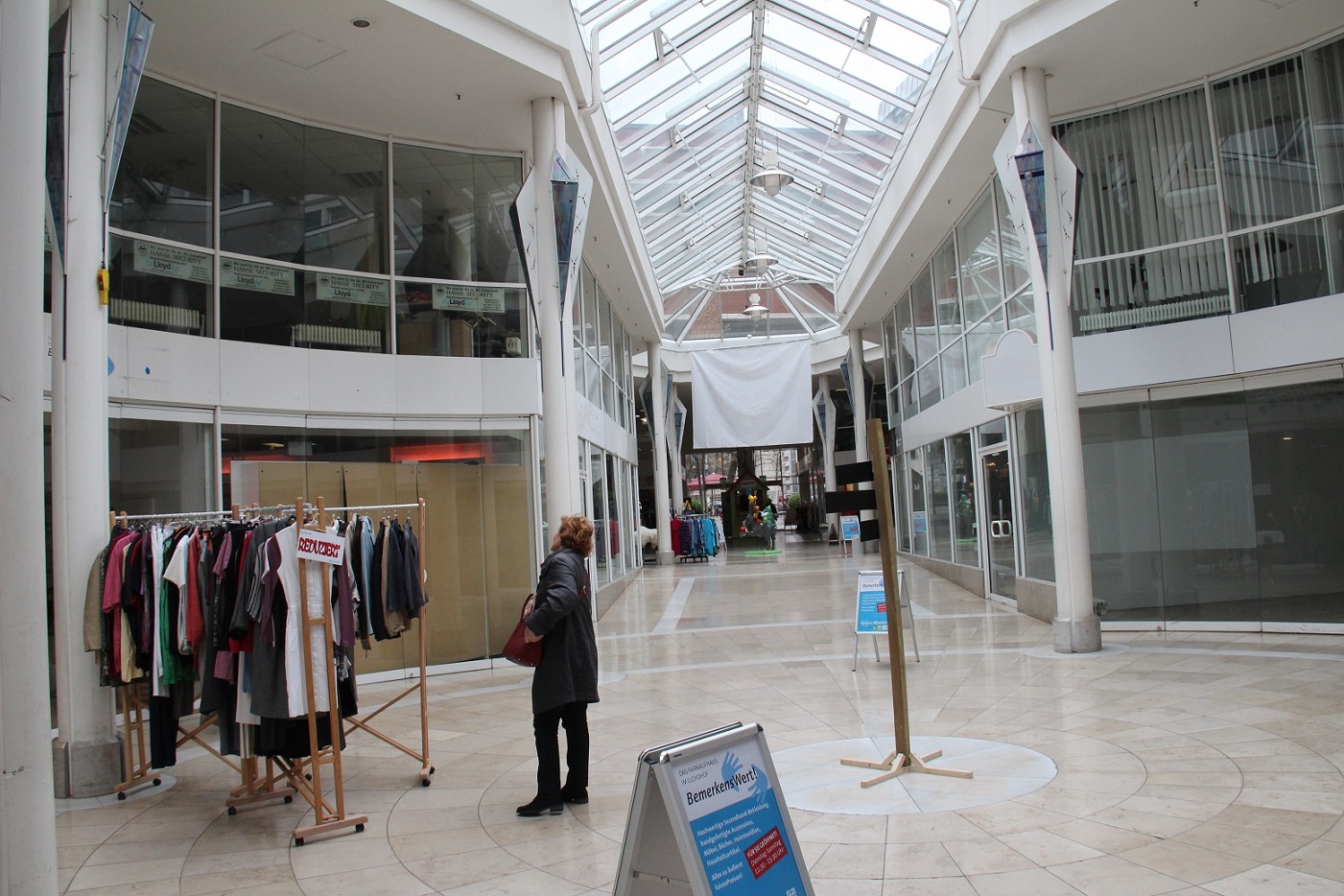
4) Change the planning and building regulations towards more flexibility
The article “Post-Crisis Urban Planning: Innovative Local Solutions to Fight Environmental Degradation” described innovative approaches how the heavily indebted public actors can find new methods and partners to handle environmental problems. The essence was to experiment with more flexible environmental standards and regulations in order to initiate bottom-up processes and to involve the population into the improvement of the environment. Similar approach can also be applied in the regeneration of residential areas.
5) Give/allow larger role to other public actors, NGOs and the private sector
In the pre-crisis period it was quite usual that the public and private players cooperated, in most cases under a PPP umbrella, in the regeneration of deprived areas. The regulation of the PPPs was quite different across countries, similarly to the advantages and disadvantages of developments in this form (the USEAct Thematic booklet devotes a whole chapter to the PPPs and gives a detailed overview about the different models).
The crisis changed most conditions for such cooperations: the public sector became poorer and the private actors, partly because of the more limited access to bank loans, are also less able to invest. Even so, in some countries the private sector remained active and hopes even to gain ground in urban development, occupying territories left behind by the weakened public sector – as the case from Athens illustrates this.
Kerameikos-Metaxourgeio is a deprived area lying close to the frequented inner-city areas of Athens, with beautiful but dilapidated old housing stock, bad social conditions. It was a typical working class and middle class area, which, however, had lost during the 1970’s and 1980’s its original residents who left the area for the suburbs, leaving a deteriorated and partly empty building stock behind. During the last 15 years and especially until 2008 the area attracted the interest first by artists and then by developers. This led to an increase of real estate values in the area and the first signs of gentrification were observable. Today it still hosts a mix of uses varying from galleries, bars, alternative “off” cultural scenes and underground cultural groups to illegal prostitution and drug use.

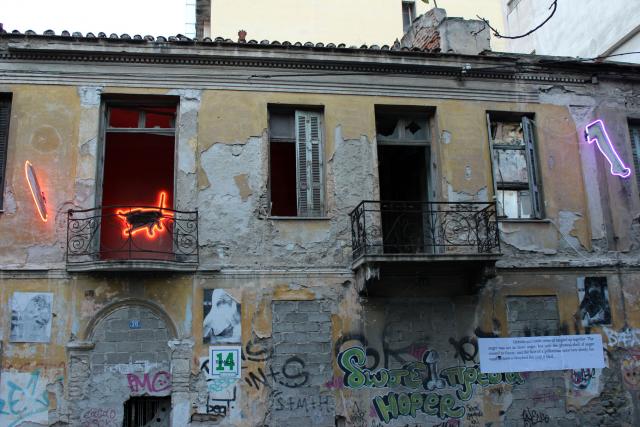
The area is currently undergoing regeneration by a young real estate developer who wants to redevelop the area into a cultural district. For this, he created an association of people for planning and invited the public to submit their ideas for the future of the district. A company called Oliarios was set up by the private developer, currently owning around 65 (mostly old neoclassic) buildings in the area. Oliaros organizes an event called ’KM Remap’ every two years, where these old buildings are handed over to Athenian and international galleries for one month as exhibition space – visitors are of course the potential "clients" of Oliaros. The changes in the area are interesting, showing the ways how collective artistic efforts use their symbolic capital through events and initiatives to regenerate the neighbourhood.
(Source: interview with Nicholas Karachalis and also an article)
6) The growing role of the residents in the process of urban regeneration
Recognizing the scarcity of public money local authorities might make attempts to include the residents into the renovation of dilapidated areas. The Magdolna case of Budapest shows the opportunities and limits of this approach.
During the early phase of the Magdolna Quarter regeneration programme in Budapest the public management company responsible for the project (RÉV8) had quite limited amount of money which was not at all enough to start full-scale renovation of any of the deteriorated buildings. To handle this situation RÉV8 aimed only for some slight improvements and raised a ’competition’ between the houses of the area. Those buildings were the winners in which the residents offered their own contribution to the physical works. The actual interventions remained quite limited, concentrating on the cleaning of the cellar and inner courtyard areas. The residents of the four buildings which won the ’competition’ participated in the cleaning work, some with their own physical contributions, others, like the elderly, helping in different forms, e.g. preparing food and drinks.
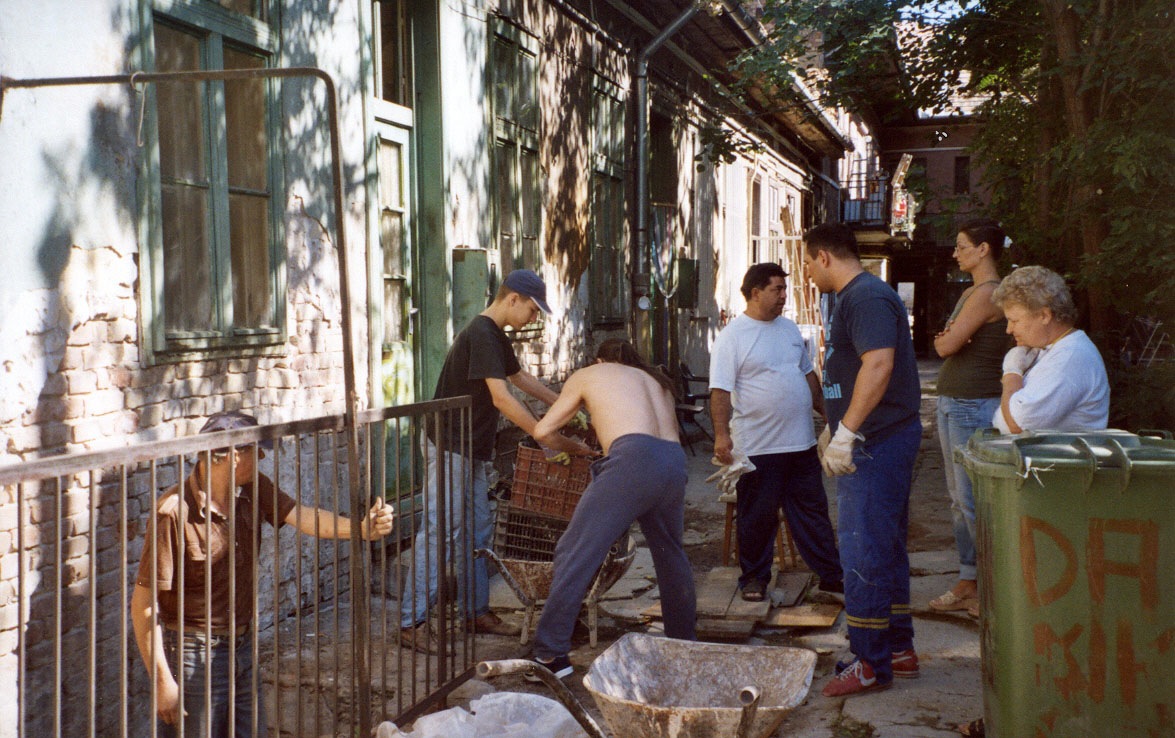

The Magdolna case illustrates a cautious step from the side of the public sector to involve the residents into renewal. Real participation, however, can also be achieved in a bottom-up way, on the wish or fight from the residents. A Polish example illustrates such a case.
In late 2007, local residents of Poznan have organized a group to defend their right to influence the development plans of their district. The local authority has planned to develop a new commercial and residential area from an abandoned industrial site, whereas the locals have insisted on a recreational green area. The movement have successfully mobilized the local community, and their protests and petitions have succeeded in convincing the district to change the plans. Similar groups have emerged in Lodz and Warsaw, as well, and the movement has spread across the country. In 2011, the first Urban Movements Congress was held, showing how spread-out the idea became. The movement has politically succeeded in removing mayors who were ignoring the citizens’ voices in Czestochowa, Olsztyn, Elblag, Bytom and Ostroda, and made itself an unavoidable stakeholder in Polish urban issues, effectively blocking by a local referendum the city of Krakow from bidding for the Winter Olympic games.
The most active movements can be found in Warsaw, Krakow, Wroclaw in topics such as public squares, streets, bike lanes, cutting the trees, parking lots. Last year local elections took place and many candidates campaigned with programme elements taken from this movement. A new national urban policy is under preparation in Poland and it remains to be seen how many of the new ideas will be taken on board.
Source: interview with Aldo Vargas
Concluding remarks
As the examples have illustrated, the scarcity of public money and the accompanying unwillingness of national governments to continue urban renewal programmes brought up many different types of innovative approaches. In some of the countries local municipalities, recognizing the change of conditions, became more innovative to initiate links to other actors and more open to ideas unimaginable in the earlier period. In other countries NGOs, population groups became the agents of change, developing new ideas or even movements from the bottom-up.
These new initiatives for area-based improvements, whether top-down or bottom-up, are very important regarding the need to handle the growing democracy-deficit in European countries. Their common characteristic is that they are mixed models, very different from pure state or pure market (privatization) solutions.
Experts of the topic, however, call the attention on the difficulties and problematic aspects of such mixed models: no automatic upscaling is possible (solutions on one level might not work on another level, e.g. with much larger territory/population); there are always choices to be made (some people gain, others lose). Many obstacles have to be considered and it is not even sure that more participation leads to more inclusion (see the article “Participation or Inclusion?”).
It is also clear that such initiatives, however innovative they are, cannot fully replace the earlier larger-scale national urban renewal programmes. The most deprived urban areas of European cities would need again centrally financed urban renewal programmes – in the lack of which their disadvantaged position cannot be changed fundamentally.
It is a hope that with the slow return of economic growth also the national urban renewal programmes will gain ground. It would be a pity, however, if the upcoming new wave of national programmes would not integrate the local and bottom-up innovations of the last years.
 Submitted by ivan.tosics on
Submitted by ivan.tosics on




